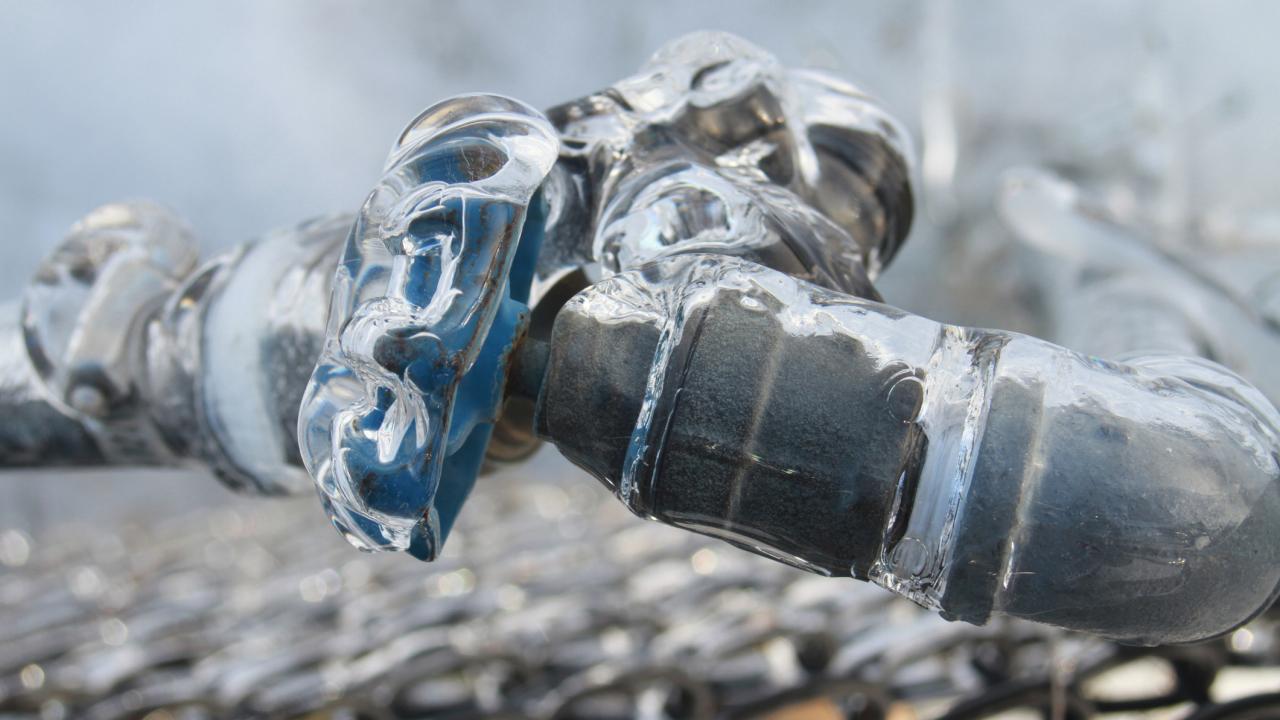They are making a number of great observations about Preventing and dealing with frozen pipes overall in the article directly below.
:strip_icc()/snow-outdoor-faucet-pipes-4af65d1e5e904fb1aa7bf74071fe5d89.jpg)
Cold weather can ruin your pipes, especially by freezing pipelines. Right here's just how to avoid it from happening and what to do if it does.
Introduction
As temperatures drop, the danger of frozen pipes rises, possibly causing expensive repairs and water damage. Comprehending just how to stop frozen pipelines is essential for homeowners in cold environments.
Prevention Tips
Shielding at risk pipelines
Cover pipes in insulation sleeves or utilize warm tape to safeguard them from freezing temperature levels. Concentrate on pipelines in unheated or external areas of the home.
Heating strategies
Maintain interior spaces effectively warmed, specifically locations with pipes. Open closet doors to enable warm air to circulate around pipelines under sinks.
Exactly how to determine frozen pipelines
Look for decreased water circulation from faucets, uncommon odors or sounds from pipelines, and noticeable frost on exposed pipelines.
Long-Term Solutions
Structural modifications
Take into consideration rerouting pipes far from exterior wall surfaces or unheated locations. Add extra insulation to attics, basements, and crawl spaces.
Updating insulation
Buy top notch insulation for pipelines, attics, and walls. Correct insulation assists preserve consistent temperature levels and lowers the risk of icy pipelines.
Shielding Exterior Pipes
Garden pipes and exterior faucets
Detach and drain pipes yard hose pipes prior to winter months. Install frost-proof spigots or cover exterior taps with shielded caps.
Understanding Icy Pipelines
What triggers pipelines to freeze?
Pipelines freeze when exposed to temperatures listed below 32 ° F (0 ° C) for prolonged durations. As water inside the pipelines ices up, it expands, putting pressure on the pipeline wall surfaces and possibly triggering them to rupture.
Dangers and problems
Frozen pipelines can result in supply of water interruptions, residential or commercial property damage, and costly repair work. Burst pipelines can flood homes and cause extensive architectural damage.
Indicators of Frozen Water Lines
Determining icy pipes early can prevent them from breaking.
What to Do If Your Pipes Freeze
Immediate activities to take
If you presume icy pipes, keep faucets open to eliminate stress as the ice melts. Use a hairdryer or towels taken in warm water to thaw pipes slowly.
Verdict
Avoiding frozen pipelines requires positive steps and fast actions. By understanding the reasons, signs, and preventive measures, home owners can protect their pipes throughout winter.
5 Ways to Prevent Frozen Pipes
Drain Outdoor Faucets and Disconnect Hoses
First, close the shut-off valve that controls the flow of water in the pipe to your outdoor faucet. Then, head outside to disconnect and drain your hose and open the outdoor faucet to allow the water to completely drain out of the line. Turn off the faucet when done. Finally, head back to the shut-off valve and drain the remaining water inside the pipe into a bucket or container. Additionally, if you have a home irrigation system, you should consider hiring an expert to clear the system of water each year.
Insulate Pipes
One of the best and most cost-effective methods for preventing frozen water pipes is to wrap your pipes with insulation. This is especially important for areas in your home that aren’t exposed to heat, such as an attic. We suggest using foam sleeves, which can typically be found at your local hardware store.
Keep Heat Running at 65
Your pipes are located inside your walls, and the temperature there is much colder than the rest of the house. To prevent your pipes from freezing, The Insurance Information Institute suggests that you keep your home heated to at least 65 degrees, even when traveling. You may want to invest in smart devices that can keep an eye on the temperature in your home while you’re away.
Leave Water Dripping
Moving water — even a small trickle — can prevent ice from forming inside your pipes. When freezing temps are imminent, start a drip of water from all faucets that serve exposed pipes. Leaving a few faucets running will also help relieve pressure inside the pipes and help prevent a rupture if the water inside freezes.
Open Cupboard Doors
Warm your kitchen and bathroom pipes by opening cupboards and vanities. You should also leave your interior doors ajar to help warm air circulate evenly throughout your home.

I was guided to that report on How To Avoid Freezing Pipes through a good friend on another web blog. Sharing is nice. Helping people is fun. Thank you for your time. Don't hesitate to check our site back soon.
Book Today!
 Ariana Richards Then & Now!
Ariana Richards Then & Now! Molly Ringwald Then & Now!
Molly Ringwald Then & Now! Patrick Renna Then & Now!
Patrick Renna Then & Now! Nancy McKeon Then & Now!
Nancy McKeon Then & Now! Soleil Moon Frye Then & Now!
Soleil Moon Frye Then & Now!